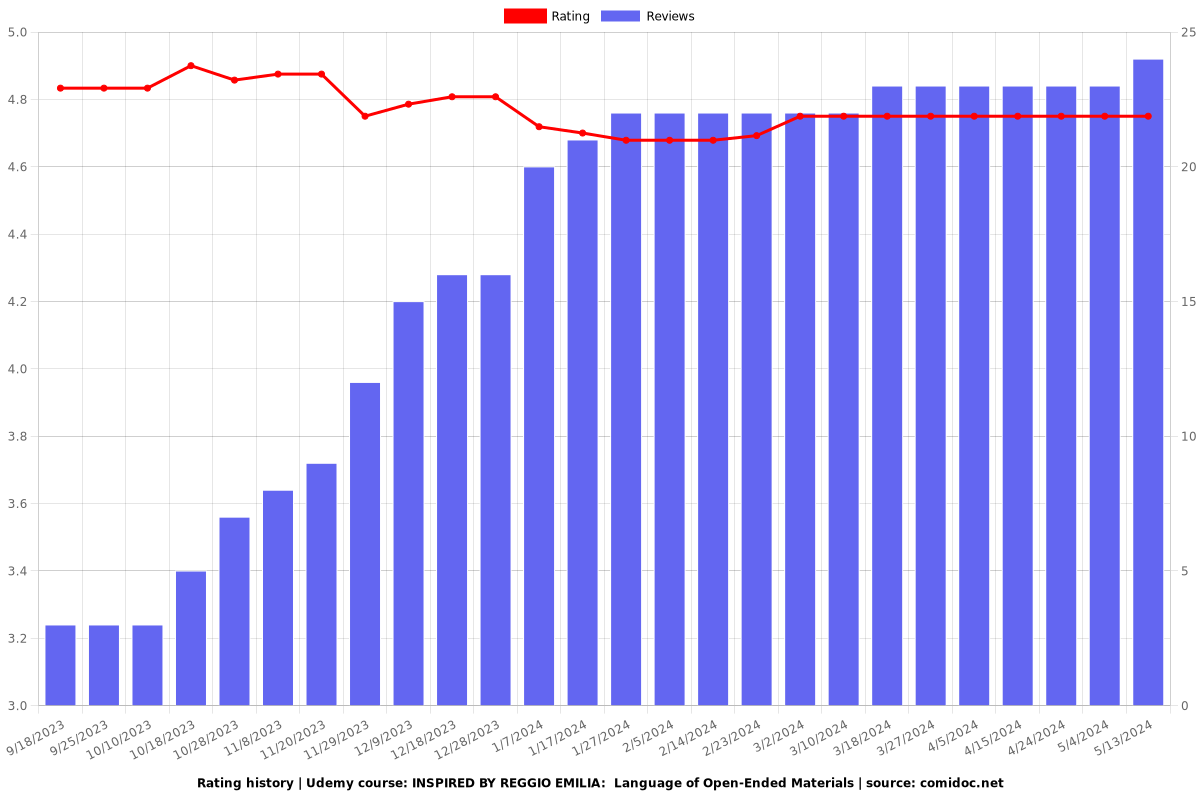INSPIRED BY REGGIO EMILIA: Language of Open-Ended Materials
Teaching Strategies in Early Childhood Education

What you will learn
This is a second tier course designed for educators working towards their associate or master degree in Early Childhood Education.
Section 1: The Language of Open-Ended Materials
Section 2: High Sensory Learning Experiences and Play Schemas
Section 3: The Language of Recycled Materials
Section 4: The Language of Drawing and Artistic Materials
Section 5: Keeping It Open-Ended
Why take this course?
Course is 2 hours.
INSPIRED BY REGGIO EMILIA: The Language of Open-Ended Materials
At Reggio Emilia inspired schools, we believe in our desire to connect to others we use many languages. Ironically, most languages we use are not spoken. This is particularly true for young children.
In this course we will examine the use of open-ended materials as a strategy to draw out the desires and stories of children. Open-ended materials are used as a creative agent, a material or tool which has no predetermined outcome.
In this course you will learn about:
SECTION 1: An Introduction to the Language of Open-Ended Materials
One of the most powerful innovations from the schools of Reggio Emilia is the use of open-ended materials as tool to create, to tell children’s stories.
The practice of using Open-Ended Materials allows children to create and re-create. They become masters of construction, mastering new found language and storytelling.
This course is designed to guide teachers and teaching teams in a deeper understanding of this practice. It is my hope that teachers will act like researchers. With intention we create beautiful and irresistible invitations, drawing children to the table of learning.
This course is built off a framework for creating provocations using open-ended materials. Be sure to download the Educator Guide to this course.
Lectures:
Environments as Invitations
Course Study Guide: A Teacher’s Guide
Course Outline
Download: Course Study Guide: The Language of Open-Ended Materials
SECTION 2: High Sensory Learning Experiences and Play Schemas
High sensory, multi-sensory learning experiences provide the best opportunity to teach across the curriculum. In this section we examined high-sensory provocations using open-ended materials.
Sensory play plays an important role in child development from birth to early childhood. It helps build nerve connections in their brain’s pathways, developing the child's ability to stay on task, manipulate objects with their hands, and control their own body movements.
MULTI-SENORY EXPERIENCES
Multisensory instruction is a way of teaching that engages more than one sense at a time. For example, say a class is studying apples. Kids might have the chance to visually examine, touch, smell, and taste apples — instead of just reading and listening to their teacher speak about how apples grow. Then they might hold a halved apple and count the number of seeds inside, one by one. Making it real is how we learn deeply.
Lectures:
Play Schemas
The Language of Natural Materials
The Language of Clay
The Language of Paper
Download: Play Learning Schemas; Explore Nature with Observational Drawing and Scientific Thinking; Promoting Creativity for Life Using Open-Ended Materials; The Tallulah Project: Bridging Our Communities with Clay
SECTION 3: The Language of Recycled Materials
Our classrooms have mini-ateliers that contain many open-ended materials, lending themselves to creative outcomes. In this video a young man creates a robot using plastic bottles, bottle tops and tape.
Our focus is no longer on buying commercial supplies from catalogs. Instead we buy things that help children put things together like tapes, wire and adhesives.
In this section we not only show you how to set up these provocations but also discuss how your school can establish your own recycling center.
Lectures:
Robots in the Making
Creating with Recycled Materials
Getting Started with Your Own Recycle Center
Download: Beautiful Stuff Letter to Parents; Using Open-Ended Materials; Asking Open-Ended Questions
SECTION 4: The Language of Drawing and Artistic Materials
Drawing in an observational skill. It is the basis of science and artistic expression. As such, the schools of Reggio Emilia remind us - in our screen filled lives - we must once again take up the pen and paper.
Plain white paper and a wide variety of writing tools create an open-ended learning experiences. It is a chance for children to create their own stories in their way.
Lectures:
The Language of Drawing
The Language of Artistic Materials
Creating Storybooks
Literacy Rich Learning Environments
Open-Ended Materials and Storytelling
The Language of Drawing: Tools of the Trade
Download: The Beauty of Observational Drawing; Why Children Should Be Given the Opportunity to Tell Stories; Checklist for Literacy Rich Classrooms; The Art of Eric Carle Educator Guide; Writing Tips for Parents
SECTION 5: Keeping It Open-Ended
In this section we take a strong look at classroom design from lighting, to colors, to furniture. We examine innovative architecture emerging in the field.
In this section you will find the MUST HAVE BOOKS listing, references books referred to in this course.
Lectures:
Displayed by Design
Inspiring Spaces for Children
Rethinking School Design
Beautiful Stuff! A tribute to Cathy Topal and Lella Gandini
Must Have Books List
On Review
Download: Must Have Books; Beautiful Stuff from Nature Chapter: Outside and Just Beyond the Classroom Door
This course includes a Learning Guide and several peer reviewed articles providing more examples and content related to the teaching strategies that use open-ended materials.
When considering creating this course, I was immediately concerned that teachers would look at the classroom photos and try to replicate what they were seeing. The old "make and take" kind of professional development. It is my hope you will seek deeper knowledge of this approach to teaching and learning.
For us, the photos and video are simply representative of the underlying principles and deep understanding of children’s thinking, questions, and curiosities. To be sure, they are spaces that tickle our imagination, engage all of our senses, and invite investigation. If we are to promote this type of environment, then we must go deeper than what is merely seen at eye level.
The Reggio Emilia approach views the learning environment as a powerful protagonist, shaping a child’s identity. It is a way of teaching that views the child as a powerful player in their own learning. It is a belief we share. We believe a teacher’s role is to draw out what the child already knows, already wonders. The use of open-ended materials and the way we offer these materials is essential to our practice.
What Educators are Saying:
These are top-rated courses on Udemy. Read below raving reviews. Purchase with confidence INSPIRED BY REGGIO EMILIA courses.
Priyanka – “This course is to remind me of children's potential to learn through play.”
Emily – “I love learning about all the different Reggio ideas to implement into my classroom. I can't wait to test out these ideas!”
Alefiyah – “The course is totally about what I believe and strongly feel for about the learning system. its helping me understand myself better. Thank you.”
Victoria – “Very user friendly. Instructor is clear and easy to understand.”
Zeenat – “I really enjoyed this course!”
Tara – “This is exactly what I was looking for to start my own learning of the Reggio Emilia approach. I love the resources that are provided.”
Renee – “I appreciate the passion of the instructor. I was more involved as it wasn't a dry lecture, but a passionate one. It was helpful to have the "wrap up" at the end to bring home the points of the videos. Thank you. I gained more knowledge from this course. I would like to learn more. I do own a digital copy of the 100 Languages of Children, older edition, but it is pretty dry and I am not a textbook learner. I am a visual/doer learner. Reggio learner one might say. :)”
Christelle – “It is so interesting how we can develop children through different methods of play.”
Maria – “I am amazed by this course as of right now. I am feeling emotional and looking to learn all about Reggio Emilia. I am beyond happy to have found this approach. I am getting this course to work as a teacher in a Reggio Inspired school and I can not be more excited!! Thank you! Mary Ann Biermeier, your course has been an eye opening to me.”
Liz – “Its so rich. Concise yet powerful. Passionately presented.”
Welcome to class!
Mary Ann Biermeier, M.Ed.
Screenshots




Reviews
Charts
Price

Rating

Enrollment distribution
